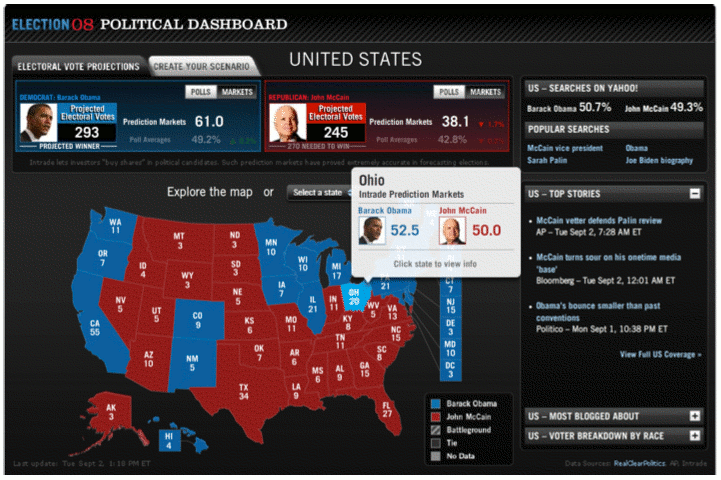Every election, many voters rationalize their choice as the “lesser of two evils”.1
However, for me, this year’s election is not about the lesser of evils.
In fact, for the first time I can remember, I actually like both major candidates in the US Presidential election.
I like Obama more and I voted for him2 — I think he’s smarter, inspires optimism, and has better policies and people surrounding him. But I like many aspects of McCain including how he denounced Pat Robertson, Jerry Falwell, and the extreme religious right they represent.3
If the party of less government could ever manage to stop legislating morality, I might actually consider voting for them. By the opposite logic, I imagine some evangelicals actually hope that Obama wins, thus strengthening their argument that Republicans can’t win without them.
On a related note, I received an email chain letter from a Snopes-averse source4 warning that McCain’s campaign is sending out erroneous absentee ballot applications to Obama supporters in an attempt to disqualify voters. Initially I dismissed it as conspiracy theory. Then, a few days ago, I received an absentee ballot application in the mail myself, even though I had just finished voting! For a moment, I thought I was a target of the scam with the evidence right in my hand. I could feel the blograge composing in my head.
So I investigated. (Read: conducted a few web searches.)
The Wisconsin State Journal (in)concludes that McCain either meddled or messed up, with benefit of the doubt going to the latter. Blackboxvoting.com (not affiliated with Bev Harris’s more cited blackboxvoting.org) paints a picture of more widespread fraud and malicious intent.
And it seems that the application I received was a legitimate and well intentioned mailing from the League of Conservation Voters Education Fund, a left-leaning environmental organization. The application’s return address had one line missing and an incorrect zip code by one digit, but the address was “correct” in the sense that it would almost surely end up at the right place, so I believe this was not part of any intentional plot to mislead.5 Still, the whole ordeal got me thinking that perhaps all unsolicited applications for absentee ballots should be outlawed — there’s just too much room for error, both malicious and inadvertent.
| 1Likely more a testament to the effectiveness of attack ads than anything else, and one of the many maddening features of a duop-racy. | |
| 2If the choice had been between Clinton and McCain, I think I would have had a harder decision. | |
| 3I also like the fact that he defied Bush on torture and held firm on the Iraq surge, a strategy that seems to have helped, despite the political consequences. On the other hand, I cringe at the thought of a President Palin, an outcome with a better than 1 in 7 chance of happening if elected, according to one estimate. | |
| 4My mom! 🙂 | |
| 5You decide: The return address on the application is: Middlesex County Clerk, PO Box 1110, New Brunswick, NJ 08903-1110. The correct address is County Clerk, Hon. Elaine Flynn, P.O. Box 1110, 75 Bayard Street, 4th Floor, New Brunswick, NJ 08901-1110. |






